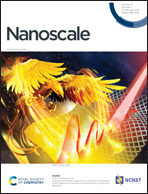High efficiency organic–Si hybrid solar cells with a one-dimensional CdS interlayer†
Abstract
A carrier-selective passivating contact is one of the main factors for the preparation of high-efficiency solar cells. In this work, a one-dimensional nanostructured CdS material combined with quasi-metallic TiN exhibits excellent contact performance with n-Si. In addition, the introduction of the CdS nanowire interlayer is more conducive to the extraction and transmission of electrons, which is attributed to a more suitable energy level alignment between the rear contact and the n-Si absorption layer. As a result, the power conversion efficiency of organic/Si solar cells based on the CdS NW/TiN/Al electron selective passivating contact exceeds 14.0%. This shows a promising technique to achieve high-performance and low-cost photovoltaic devices.



 Please wait while we load your content...
Please wait while we load your content...